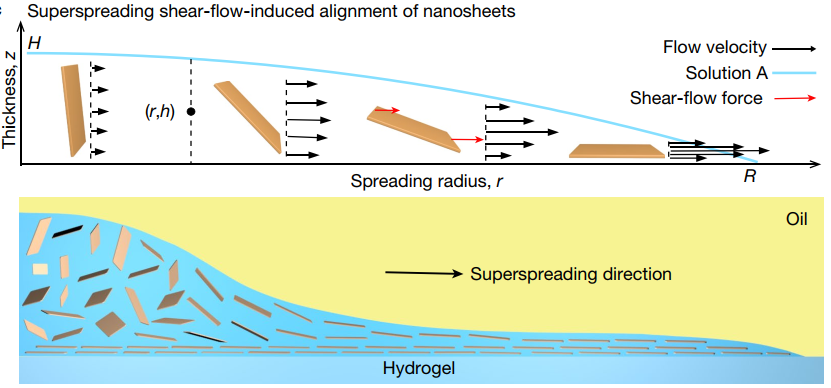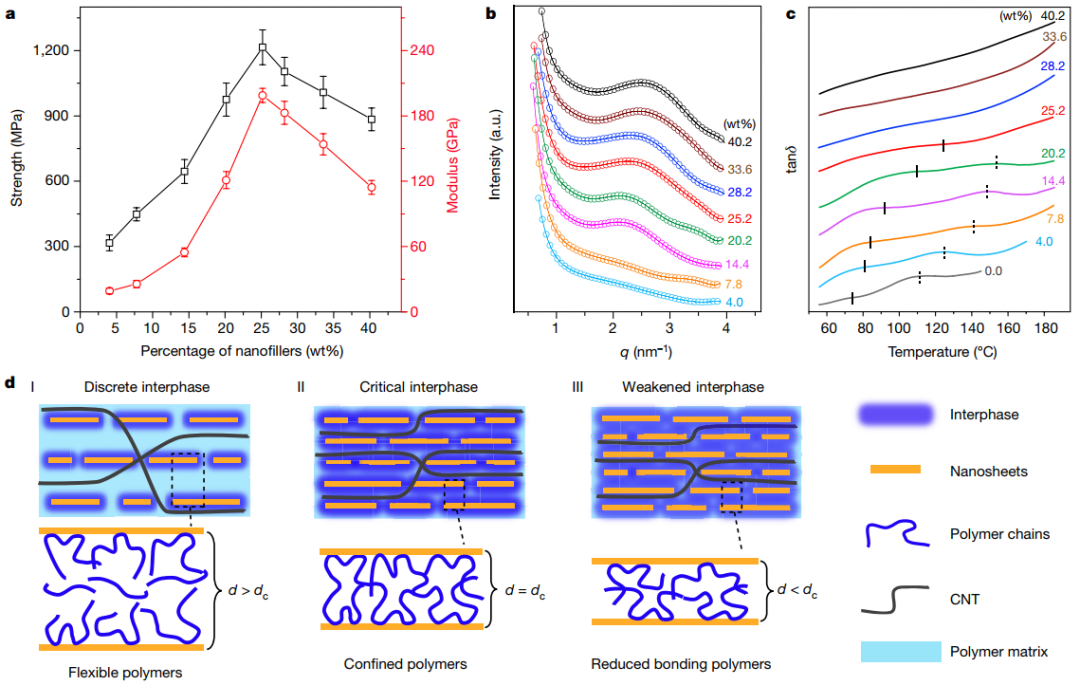A latest research in the field of ultrastrong materials, entitled “Layered Nanocomposites by Shear-flow-induced Alignment of Nanosheets” was published in Nature by the team of Prof. Liu Mingjie from the School of Chemistry. Dr. Zhao Chuangqi, Dr. Zhang Pengchao, Associate Professor Zhou Jiajia are first authors and Prof. Liu Mingjie is the corresponding author.

Biological materials, such as bones, teeth and mollusk shells, are well known for their excellent strength, modulus and toughness. Such properties are attributed to the interaction between highly ordered structures and the connected organic substrates. Inspired by these elaborate biological structures, scientists have made many attempts to conduct the preparation of layered structural biomimetic materials. However, owing to limitations of current methods on practical application, how to produce ultrastrong layered nanocomposites in a constant and scalable manner remains a challenge in the field of ultrastrong materials.
Prof. Liu Mingjie’s team proposed a strategy of liquid superspreading preparation based on dilute reaction solutions to produce layered structural composite films, which provided a possibility for a large-area preparation of layered composite materials. Researchers also concluded that the stiffened mobility of polymer chains under the confined space of inorganic nanomaterials leads to the ultra-high mechanical properties of composite materials. This research presented a new solution to the structural design and large-scale production of composite materials.
This new strategy was employed to achieve the preparation of layered structural nanocomposite films by usingshear-flow-induced alignment of nanosheets in the superspreading process (Fig. 1) and a rapid fixation of aligned nanosheets by strong interactions of high polymers (Fig. 2).

Fig. 1 Superspreading shear-flow-induced alignment of nanosheets

Fig. 2 The transiently aligned nanosheets are rapidly fixed via in situ Ca2+-induced crosslinking of NaAlg
Nanocomposite films demonstrated much higher mechanical properties compared with the reported nanocomposite films prepared by traditional strategies (Fig. 3). In addition, this technique can achieve oriented alignment of nanosheets and a continuous large-scale fabrication of layered nanocomposite films of various polymer polymerization systems in a universal and efficient way.

Fig. 3 (a): The SS-GO/clay/CNT nanocomposite films with the record high tensile strength and modulus; (b): The clay/CNT nanocomposite films with the record high tensile strength and toughness
The mechanical properties of nanocomposite films depend on oriented structures of nanosheets and the interaction with highpolymers substrates. To elucidate the underlying reason of higher mechanical properties demonstrated by nanocomposite films, researchers measured the mechanical properties of nanocomposite films with different weight percentages of nanofillers. Findings showed that the interlayer distance of nanosheets has a direct influence on the interaction between nanosheets and highpolymers substrates, and on the mechanical performance of nanocomposite films, while the stiffened mobility of polymer chains under strong confinement plays a decisive role in nanocomposite films’ higher mechanical properties (Fig. 4).

Fig. 4 Nanocomposite films with different weight percentages of nanofillers. (a): Strength and modulus of nanocomposite films with various weight percentages of nanofillers; (b): Plots of diffraction vector of nanocomposite films with various weight percentages of nanofillers; (c): Curves of tanδ versus temperature of nanocomposite films with various weight percentages of nanofillers; (d): Schematic diagram illustrating the interphase between the aligned nanosheets at different interlayer distances
The work was supported by National Key R&D Program of China, National Science Foundation for Distinguished Young Scholars, National Natural Science Foundation of China and 111 Project.
More information of this article:
https://www.nature.com/articles/s41586-020-2161-8
Reviewed by Li Jianwei
Edited by Jia Aiping & Wang Qing
Translated by Feng Yueyue

